The Sanctuary Papers - December 2022
First published in Sanctuary Asia,
Vol. 42
No. 12,
December 2022
By Shatakshi Gawade
With its base anchored in the sea floor, Gorgonocephalus arcticus entices food into its waving, extended, tendril-like arms. This invertebrate, a species of basket stars, has five arms, and moves along the ocean floor. Each arm has two branches that divide into sharp-hooked sub-branches. If broken or chopped off, the limbs can grow back. The metre-long arms are twisted together to form a basket, to capture drifting zooplankton that are wrapped in mucous strands and pulled to the star’s mouth as a tasty morsel. The same twisting arm branches can turn into a ball when the star finds itself in danger of becoming another’s prey.
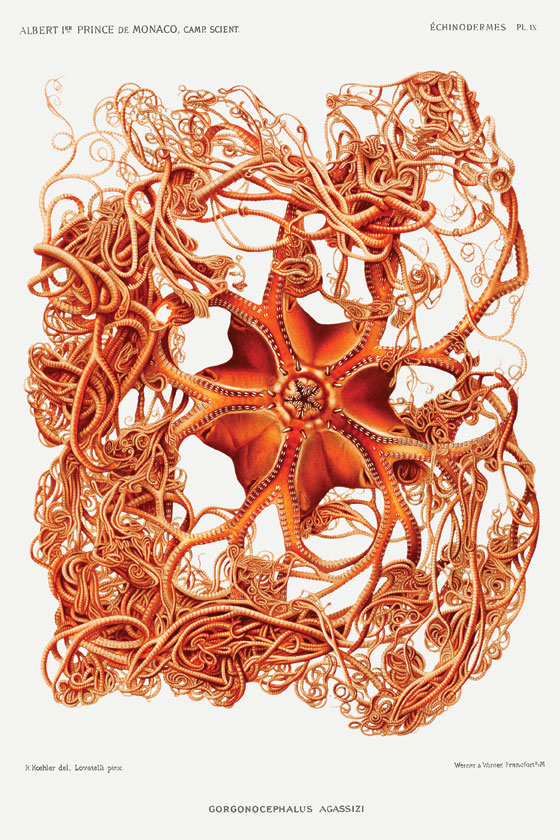
Photo: Public Domain.
The Mysterious Avian Disappearance
For close to a century, nobody knew what had happened to the Carolina Parrot. Psitticus caroliniensis, the only parrot native to North America, was suspected to have been pushed to extinction because of human activities – habitat encroachment and killings. The last known wild specimen was killed in 1904 in Florida. And on February 21, 1918, the last living individual of this 30 cm. bird died in the Cincinnati Zoo.
The Carolina Parakeet was at one time found all along America’s east coast. The only endemic species of North America, this parakeet lived in old, swampy forests along rivers. Its habitat was lost to agriculture, and likely fragmented on account of natural disasters. Some farmers recognised its importance in controlling invasive cockleburs in fields. However, there were others who considered them pests, and shot them. It is believed, the brilliantly-coloured birds that lived in flocks would immediately gather to mourn their fallen mate, becoming easy targets for the shooters. With their green, yellow and orange hues, these birds were also hunted for their plumage to use as hat accessories or brooches.
To lay to rest the speculations about its demise, researchers sequenced the genome of the parakeet, taken from specimens that were preserved in a private collection in Spain. As the DNA was too fragmented, scientists first sequenced the genome of its closest living relative, the South American Sun Parakeet. The analysis revealed that there was no inbreeding in the bird, which would otherwise have led to a slow decline in population. Though there were no markers of diseases transmitted by domestic fowl, illnesses could not be ruled out. Ultimately, researchers concluded that the suspicions were right – it was direct and indirect human activity that caused the extinction. Such studies are most useful in shining a light on human behaviour and impact on biodiversity.
A Not-so-Delicate Flower
The hard-shelled Portunus pelagicus has a delicate name – flower crab! This crustacean is native to the Indian and Pacific Oceans, and also the Mediterranean Sea.
The male has white spots on a bright blue body, and the female is a dull green or brown. The female finds shallow marine habitats to lay and hatch her eggs. Estuaries are important for the survival of these crabs – newly hatched larvae swim into estuaries for food and shelter, which is crucial for their growth and development. Their anatomy is characterised by long chelipads, or clamps, which are enlarged front legs and are meant for grabbing prey. Males have longer chelipads than females. Also known as the blue swimmer, these crabs have a round body that is between
5-20 cm. wide.
Flower crabs stay buried in mud or sand for extended periods, primarily during the day. These little 10-legged creatures emerge from their subsurface lair during high tide to feed, especially on bivalves and small fish, and sometimes macroalgae. However, they cannot stay out of sea water for long. Endowed with a pair of flattened, paddle-shaped legs, they are excellent swimmers. Some of their characteristics such as high tolerance to ammonia and nitrate and the rapid growth of larva have made flower crabs a widely fished species in Australia and Asia.
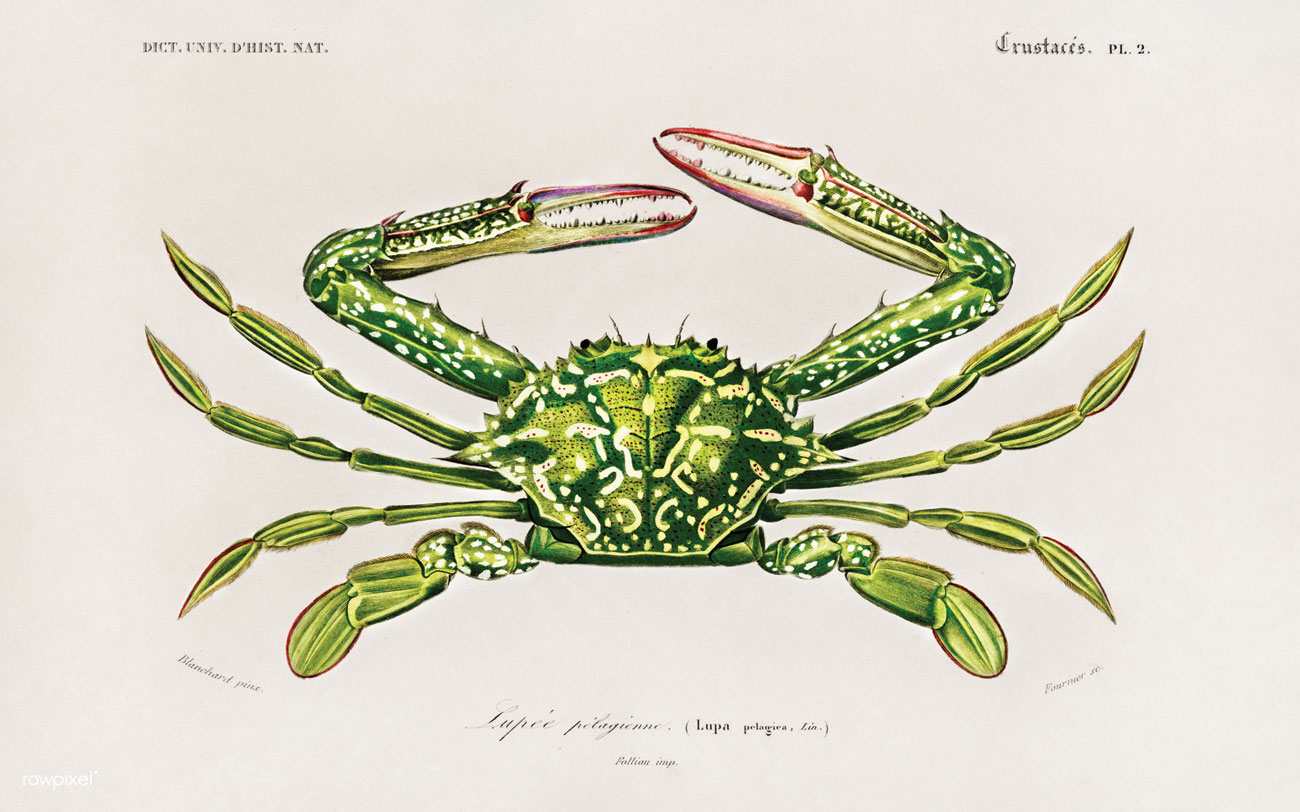
Photo: Public Domain/Jacob Studer.
Did You Know?
Apart from polar bears, Ussurian tube-nosed bats Murina ussuriensis are the only known mammals who use snow igloos to hibernate. The high air content in snow makes it a better insulator than the exposed trees in winter. These four-to-eight gram bats, found in Siberia, Korea, and Japan, are the first known instance of bats snuggling in snow igloos for their winter slumber.
Wolves In Our Midst
Myth and fiction are replete with appearances of this wild mammal – the wolf. Children’s stories such as Little Red Riding Hood and Three Little Pigs feature the wolf as a villain. The wolfpack is an integral part of Mowgli’s life in Rudyard Kipling’s The Jungle Book. And as apex predators, wolves play a lead role in maintaining a balance in the ecosystem that they are a part of.
There are two subspecies of this dog-like, non-domestic carnivorous animal – the grey or timber wolf Canis lupus, which lives in the northern hemisphere, and the Ethiopian or Abyssinian wolf Canis simensis, which lives in the highlands of Ethiopia. The rippling, muscular body of the wolf is built for travel and high-speed chases. It can run at 60 kmph. because of its large feet, long legs and narrow chest. Its sharp senses and powerful jaws make it a strong predator.
An interesting aspect of a wolf’s life is pack behaviour. These social animals live in packs of six to 10 individuals that hunt, play, travel and live together. A pack bands together to hunt large ungulates such as elk and moose, but they also feed on smaller animals like snakes and birds. An adult wolf can eat up to nine kilogrammes per day. The dominant male and female of the pack are the only members who breed, while others care for the pups.
As ferocious and scary as they are, wolves are not known to attack humans often. They do, however, attack domestic animals, and have historically been culled across North America for it. In India, about 400-1,100 wolves live in the Himalayan region and 4,000-6,000 in the peninsular region. The Indian wolf Canis lupus pallipes mostly lives outside Protected Areas and is often in conflict with humans due to its livestock predating habits; it is also scavenger.
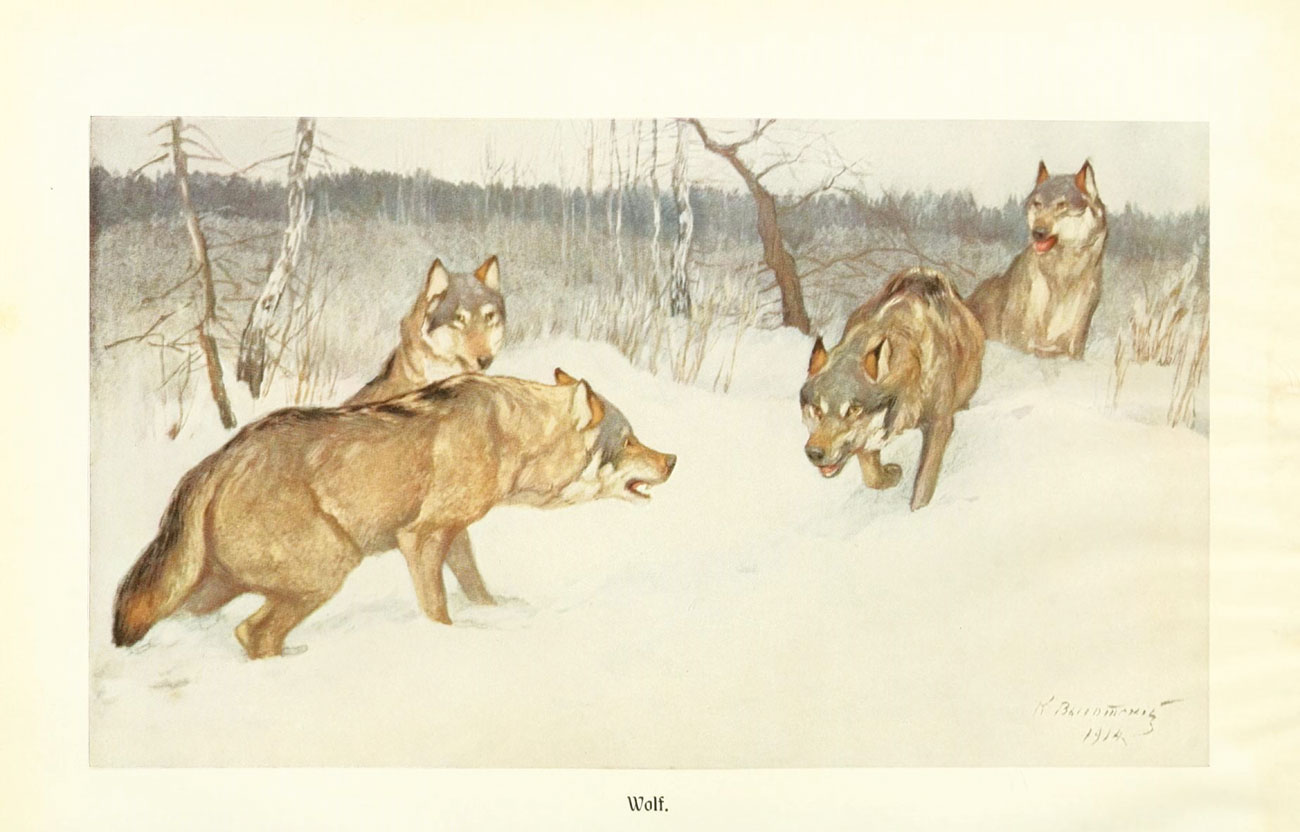
Photo: Wikimedia Commons.
The Music Bug
What one could mistake for a papery seed likely to get swept up in a wind gust is actually a species of ground beetle! And can the music aficionados here see the likeness of an instrument in it? A violin, perhaps? Yep, the wings of this ground beetle are shaped like the string instrument, giving it the common name ‘violin beetle’ or ‘banjo beetle’ Mormolyce phyllodes. To be more specific, the elytra (forewings) of this beetle are shaped like the wooden instrument. Their leaf shape and black or brown colour makes a brilliant camouflage mechanism, an adaptation known as mimicry.
Peninsular Southeast Asia, Greater Sunda Islands and Borneo are home to all six known species of the violin beetle. The earliest species records of the varnish-coloured insect are traced to Java in 1825. This beetle has a long head and antennae, and spindly legs.
Its wafer-thin body allows it to hide in soil cracks and under the leaves and barks of trees. Its larvae live between the layers of the bracket fungus of genus Polyporus. The young and adult of this species are both predators and feed on insect larvae. It also secretes the pungent-smelling, poisonous butyric acid as a defence mechanism.
One species of this rare violin beetle was documented by entomologists after 67 years since it was first found. The Mormolyce phyllodes engeli thrives in the forests of the Philippines. Researchers noted that the six centimetre-long insect feeds on wild mushrooms and bracket fungi in the forest.
And no, the wind is not their mode of transport! Adult beetles fly from August and November.
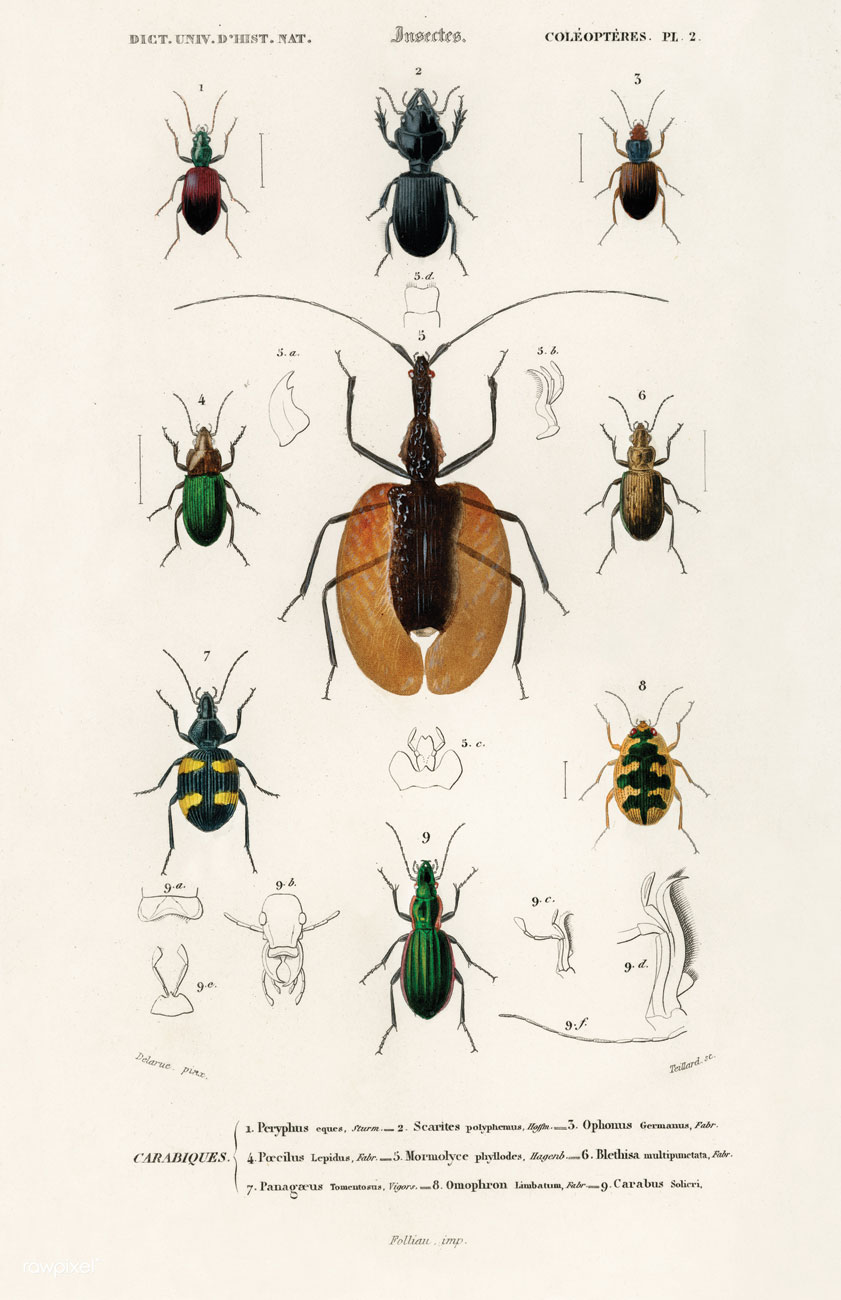
Photo: Public Domain/F. Warne.
Did You Know?
Small fruit flies Drosophila are endowed with muscles under their compound eyes that enhance their depth perception and allow them to move their retina independent of their body. Usually, animals with compound eyes attached to an exoskeleton have to move their whole body to see. The fly’s eye muscles suggest evolution similar to vertebrates that also move their eyes independent of their bodies.
What’s in a Name?
What do you call a salamander that sounds like a dog? A mudpuppy or waterdog. However, the mudpuppy is erroneously named for the incorrect belief that it barks like a dog!
Necturus maculosus is a carnivorous amphibian that is usually around 28 cm. but can grow up to 40 cm. This salamander species gets its name because of its squeaky vocalisations that sound a little like a dog. Akin to a domesticated canine, mudpuppies have a collar – bright red, bushy external gills, which make it easily distinguishable. The gills grow when the species is still in its larval stage. The adult mudpuppy is grey to brownish-grey and has blurry blue-black spots. Its tail is wide, head is flat, and legs are stubby. The female of the species watches over her babies until they hatch, which is unique for salamanders.
Mudpuppies are found in southern central Canada and the United States. They are bottom dwellers, live at the base of rivers, lakes and ponds, and never leave water. They live under logs, rocks and in vegetation through the day, and emerge at night to eat sea animals like snails, worms, crayfish and eggs of other animals.
Dead or Alive
A single protein. That’s all it takes to convert a thriving plant into a zombie plant.
When parasitic bacteria Phytoplasmas invades a plant, it sterilises the plant and at the same time attracts sap-sucking insects that will transport the bacteria to new hosts. The parasite turns flowers into leafy shoots, makes the petals green, and gives the plant ‘witches’ brooms’, a strange mass of shoots. Effectively, the plant is alive only to hold the pathogen; it cannot reproduce, and cannot function as its normal self any more. The plant starts becoming yellow, and its growth is stunted. It is now a zombie plant.
But there’s one more control that this clever bacteria exercises – over bugs that visit the plant. Researchers observed that in the presence of the protein, the plant became more attractive for leafhoppers, which transmit the parasite. The bug even laid more eggs on the zombie plant than a normal plant. Instead of killing the insect, which was crucial for propagation of the parasite, the bacteria’s presence increased the survival of insect vectors.
Other parasites such as the rust fungus force their host zombie plants to convert their leaves into a bright yellow colour. These ‘pseudoflowers’ attract insect pollinators, which carry the fungal cells to new, uninfected hosts.
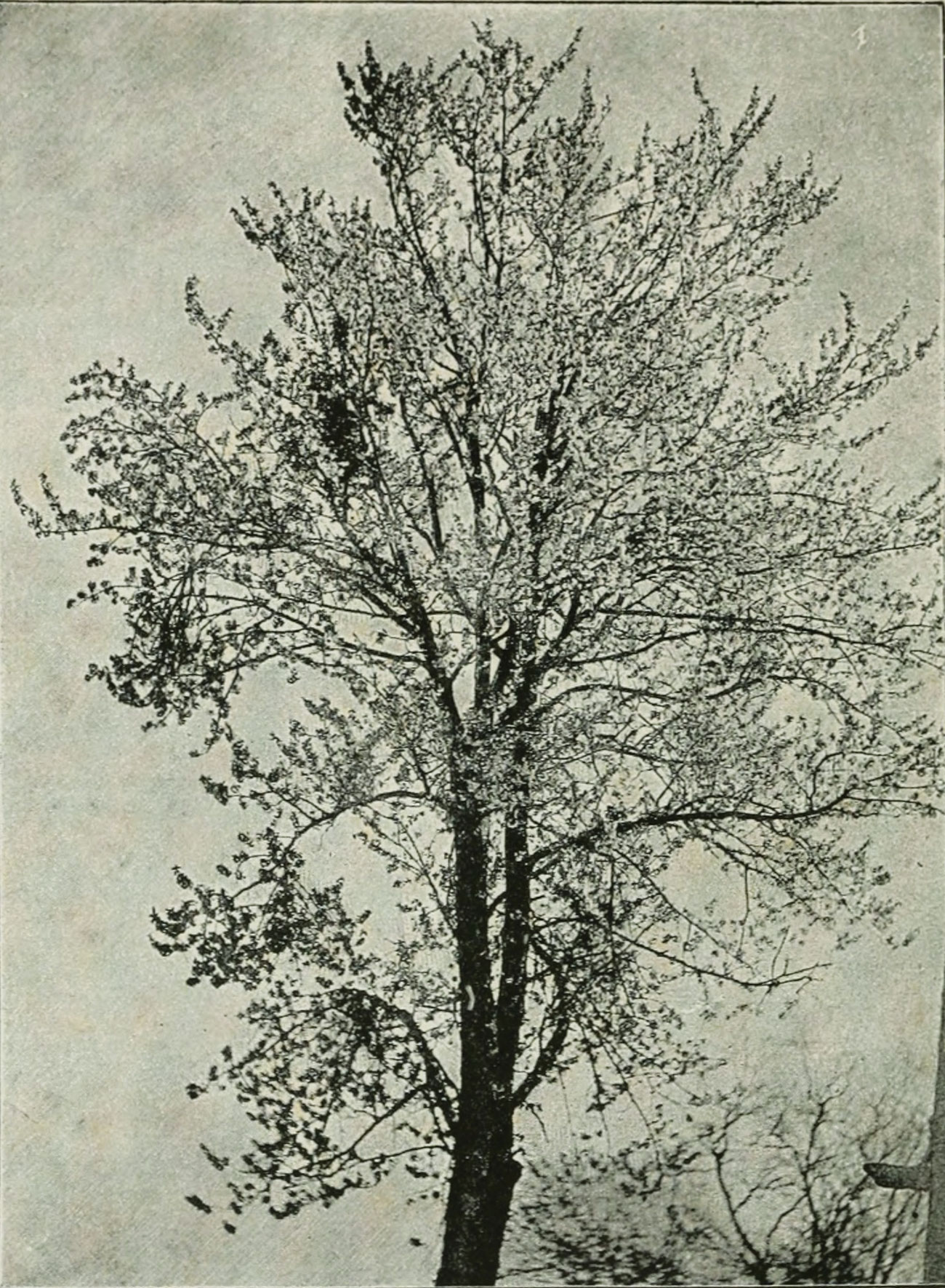
Photo: Public Domain.
Did You Know?
DNA can survive for a long time in blowflies and flesh flies that feed on dead animals. They effectively carry a fast and inexpensive snapshot of mammal diversity from hard-to-reach spots of rainforests. The DNA can be sequenced to map biodiversity! Researchers could identify 16 mammals in Côte d'Ivoire using this cool technique. The status of endangered species can also be understood with this method.





